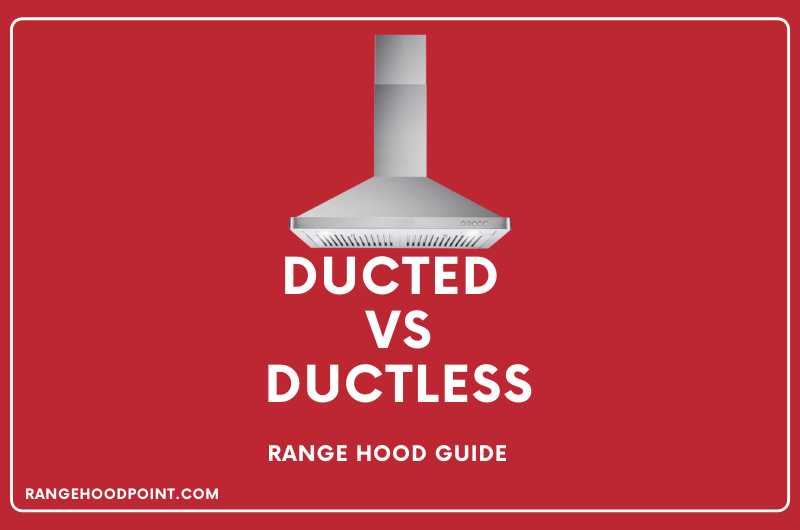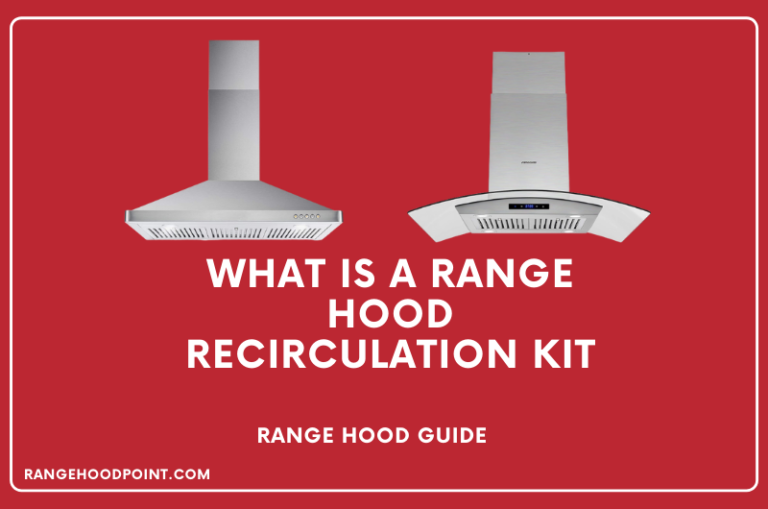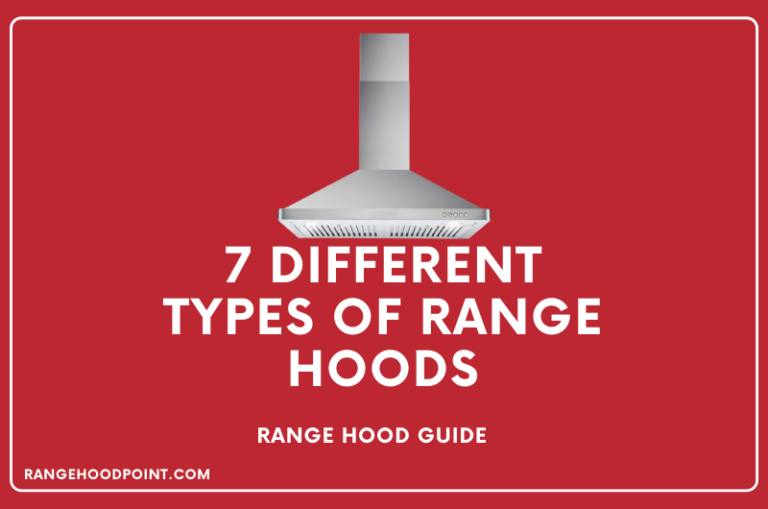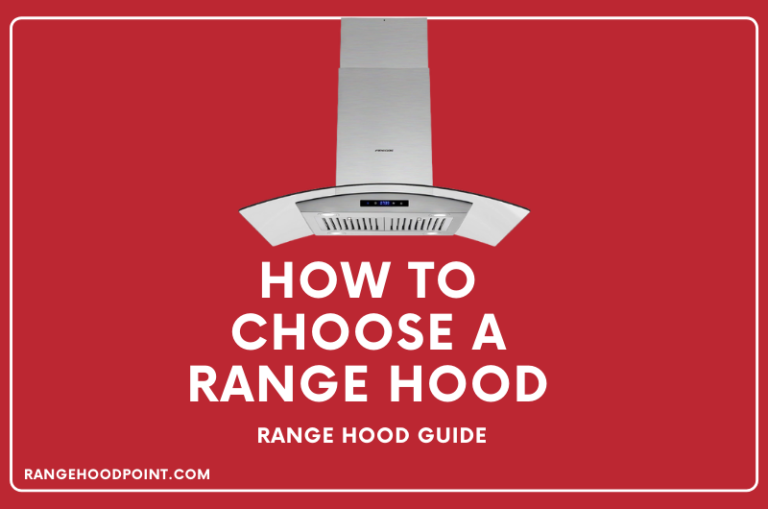Ducted Vs. Ductless Hood – Which One is better and why?

Have you ever had to wash a kitchen that gets plenty of use? The adhesive film covering all of the cupboards and worktops, especially around the cooking area, is challenging to eliminate. One of the advantages of employing a hood is that it filters out oil fumes before something settles and causes significant cleanup issues.
A range hood is, in reality, among the essential kitchen appliances. It consists of a cover or other “catching area” and a fan or compressor motor that removes impurities from the air formed during cooking. The range hood improves kitchen air quality by capturing and eliminating toxic fumes straight at its source, making cleanup much more convenient.
Features
Airflow
Manufacturers measures the ejected air’s in cubic feet per minute (CFM). More Airflow equals faster Ventilation, but that doesn’t mean your kitchen will have better smoke collection and removal. Many of the hoods we examined claimed to have minimal Airflow vented just as well as those that claimed to have twice as much Airflow.
The number of different fan speeds
The majority of the hoods we evaluated have three to six fan speeds. We propose at least two speeds: a high-speed setting for cooking and a shallow, tranquil setting for after cooking to keep the space ventilated while cooking. There are several sets of speeds if there are more than three fans.
Thermostat Management
In some models, a built-in temperature probe turns upon on fan immediately if the temperatures underneath the hood rise too high. The range hoods ducting are the only ones that have detection feature. The thermostat’s true purpose is to safeguard stove circuitry from harm caused to the kitchen by excessive temperatures. When the flame temperature rises too much, the exhaust fan activates, drawing in cooler air first from the rest of the kitchen, simultaneously releasing the hot air. So, if you’re cooking using oil and your pan gets fire, the furnace blower will turn on, drawing more air to the fire, spreading it, and potentially exacerbating the problem.
Reduction In Health Diseases
There are various health benefits to kitchen airflow that should not be overlooked. Elimination of additional liquid and oil prevents the formation of the sticky film that draws mold and microorganism. And encourages the influx of fresh outside air with a properly designed range hood ductings. Eventually improves air quality—not simply within the room but all over the house. Impurities are especially crucial for people who suffer from breathing issues. After all, who does not wish to relish a breath of fresher air?
Ventilation
The ventilation capacity of duct vs. ductless range hoods differs as well. Unlike ductless range hoods, ducted range hoods maintain the kitchen cooler and dryer. Because a ducted range hood draws everyone out of the kitchen at once, but a ductless range hood accumulates hot air. Therefore, the air isn’t chilled, but it is purified.
Metal ducting is usually a good idea. However, it would help if you chose between a tubular steel duct and a smooth inner duct for metal ducting. Some may argue that flexible ducting is preferable for understandable reasons. But, if you think about it scientifically, every curve makes it more challenging to get the air out.
Ducted range hood
As ducted hoods are the range hoods without a ventilation system to convey air out of the kitchen. Ducted hoods are placed in the kitchen with a venting system that withdraws the air out of the immediate surroundings.
Vent pipes must connect a ducted range hood to an external venting with pipes that convey particulate matter out of the area. Vent pipes set it apart from a ductless range hood, which recirculates air through a filter before returning it to the kitchen.
Ductless range hood
Almost anywhere, you can put ductless hoods. You are not forced to install them only where there is a duct because they do not need to be exhaust to the exterior of your property and are ductless. These ventilation range hoods work by sucking in air, purifying it, and then blowing it back into the room, a process known as recirculation. Activated carbon or charcoal within the filtration helps eliminate odors and smoke particles from the air, befittingly recirculating throughout the room.
Duct VS. Ductless hood (Pros and Cons)
Ducted hoods square measure simpler at removing wetness and steam from the cookery space. They filter and recirculate the air instead of venting it totally out of the kitchen. Ducted exhaust manifolds are more energy-efficient and quieter. Comparison of recirculating range hood vs. vented is debatable, however, as performance and sound generation differ dependent on the brand, size, model, as well as how your range hood is maintained.
A ducted hood is installed where the duct system adheres to the house’s exterior spaces or buildings, which is a drawback. A range hood may limit the spaces in the kitchen where your range and hood can be placed.
Ducted range hoods win hands down, according to our thorough analysis. While the only disadvantage is that setup is a time-consuming process, the benefits outweigh the disadvantages. It also frees up space, but when it comes to long-term use, it outperforms its counterpart.
If you have the choice, a ducted range hood is unquestionably the superior option in most circumstances. Ducted range hoods remove pollutants, smoke, hot air, and humidity from the kitchen, keeping it cool and vibrant. Non-ducted hoods, on the other hand, recirculate air while removing pollutants and smoke.
Worth of Duct Vs. Ductless hood
A ductless range hood has the advantage of becoming more versatile and may be placed practically anywhere. Because it merely filters and recirculates air through the kitchen, you will not have to worry about placing a ductless range hood near the pipes or ducts that access the exterior.
In this regard, a ductless hood may be more practical than a ducted system, especially in construction. Some ductless units even have timers and may be set to switch on and off on their own.
Regrettably, ductless range hoods it’s not without their drawbacks. Because this sort of hood recirculates air rather than drawing in fresh air or letting out stale and dirty air, your kitchen may become quite humid. Because ductless hoods often demand substantially more fan power, their decibel levels may be slightly higher than ducted exhaust systems.
A Duct-less hood works effectively in industrial kitchens, and you won’t have to spend hours on maintenance. The reason is that such kitchens are designed with the appliance in mind, which ensures ease.
However, this ignores the fact that ductless range hoods are inherently inefficient. If you’re seeking adaptability, they’re still the most acceptable option.
What is a convertible range hood, and how is it different from a ducted range hood?
You may get confused between the game of convertible vs. ducted range hood. You can switch a convertible range hood from ducted to ductless operation. Convertible ducted hoods are usually ducted range hoods that could be made ductless with a recirculating CF kit.
Convertible vs. ducted range hoods, External ducting, or recirculation are both options for convertible range hoods. The best range hoods for effectively eradicating unpleasant scents in the kitchen are typically believed to be ducted range hoods. Installation is more difficult unless ducting is already in place also because the vent must connect to the exterior of the house.
Factors to Evaluate and find a good Range Hood
1-What to Think About
Select the appropriate type. If the hood is on an external wall, ductwork can be run up through the cabinet and then outdoors, or it can be routed simply via the back of the hood in some versions. If ductwork is not conducted through the cabinet, it should be routed through a chase, soffit, or ceiling.
2-Is Downsizing A Bad Idea
When it comes to this, bigger is almost always better. Any hood you consider purchasing should have been at least as broad as the cooking area it will be installed over. Also, please stay away from downdraft hoods, which performed poorly in our previous tests.
3-CFM Alone Isn’t Enough
The manufacturer’s airflow claims emphasize the amount of air ejected in cubic feet per minute (CFM). Faster venting is aided by increased Airflow, but this does not guarantee more excellent smoke capture and evacuation.
4-Elegant And Practical
Under hoods had evolved into attractive as well as practical items. Most now have a stainless steel look, and you don’t have to pay a pro-style fee to acquire a pro-style hood.
5-Strength
In range hoods, the energy or air circulation is calculated in cubic feet per minute (CFM). Get a range hood with at least 350 CFM if you perform heavy cooking with steam or strong scents. If your high burner produces 45,000 BTU, for example, a range hood with 450 CFM will best clear the air. The greater the CFM, therefore, the noisier the hood will be.
6-Ducting size
Typically, ducting is described in terms of its diameter, with inches being the unit of measurement. To ensure a perfect match, ensure the ducting you choose is the same size as the range hood’s pipe or exhaust.
Distinction between ducted and passage vary hoods and cleaning conditions
A ducted range hood, as when the name implies, uses ductwork to ventilate the air in the kitchen. A ductless or duct-free range hood filters the air and recirculates it back into the cooking area through a charcoal odor filter. A ducted range hood will ventilate the cooking area more effectively and efficiently.
Once a month, wash the grease filters in hot water with detergent. Before restoring the filter, make sure it is scorched. If the grease filter becomes broken or too dirty to clean, it should be replaced.
Ideal range hood height
Inside: While Indoor cooking, leave 28-36 inches between the top of the hood and your kitchen surface when cooking. If the hood is much less than 28 inches from either the cooktop, heat would have been too close to the electronic systems, and if it is over 36 inches from either the cooktop, the hood’s performance will begin to decline. To bring your hood to the correct eye level, adjust it anywhere between 28 and 36 inches. The height that could be appropriate for an average would be 32 inches.
Outdoor: It is recommended to mount your outdoor hood 36 inches away from your cooking surface. Because outdoor grilling produces intense heat, the distance between the cooking surface and the hood should be greater than that advised for indoor cooking to avoid hood damage. Outdoor installation heights range from 36 to 42 inches above the cooking surface.
CMF and Sones of range hoods ducted
Depending on the model, there are numerous ducting options. The 3 14″ X 10″ duct can be vented vertically and horizontally through to the product’s back. The range hood’s top has a 7″ round duct vent through it. Some hoods are meant to be installed using more than one duct technique or direction, while others are intended to be erected using only one duct technique or direction.
Cubic Feet per Minute (CFM) may be a measuring of what quantity air is affected during a given quantity of your time. It’s the amount of air that enters your kitchen every minute in cubic feet. As you may have guessed, the higher the number, the more air can move through the purifiers or exhaust in one minute. If your kitchen produces many emissions, a range hood with a large CFM rating is recommended.
A sone is a technique of acoustic measurement similar to how a pound is used to take measurements.
Bottom Lines
A fantastic solution to all the heat and health diseases could be range hoods, but the honest debate is ducted vs. ductless range hoods. Make the decision right away and make your life easier and cleaner with the one that suits your cooking style and kitchen design.
{ "@context": "https://schema.org", "@type": "BlogPosting", "mainEntityOfPage": { "@type": "WebPage", "@id": "https://rangehoodpoint.com/ducted-vs-ductless-hood/" }, "headline": "Ducted Vs. Ductless Hood – Which One is better and why?", "description": "A range hood is, in reality, among the essential kitchen appliances. It consists of a cover or other "catching area" and a fan or compressor motor that removes impurities from the air formed during cooking. The range hood improves kitchen air quality by capturing and eliminating toxic fumes straight at its source, making cleanup much more convenient.", "image": "http://rangehoodpoint.com/wp-content/uploads/2021/08/Ducted-Vs.-Ductless.png", "author": { "@type": "Person", "name": "Howdy Victoria", "url": "https://rangehoodpoint.com/wp-admin/profile.php" }, "publisher": { "@type": "Organization", "name": "Howdy Victoria", "logo": { "@type": "ImageObject", "url": "http://rangehoodpoint.com/wp-content/uploads/2020/04/cropped-food_icon_fav.png" } }, "datePublished": "2021-08-26", "dateModified": "2021-08-26" }

![How to Clean a Range Hood [Step by Step Guide]](http://rangehoodpoint.com/wp-content/uploads/2021/08/How-to-Clean-a-Range-Hood-768x509.png)

![How to vent a range hood [Step by Step Guide]](http://rangehoodpoint.com/wp-content/uploads/2021/08/How-to-vent-a-range-hood-1-1-768x509.png)
